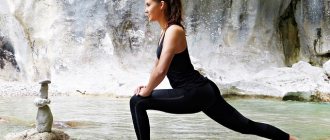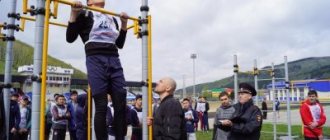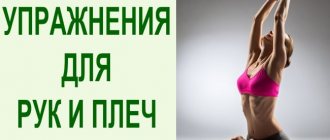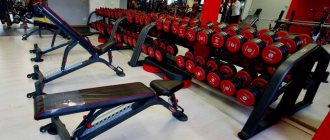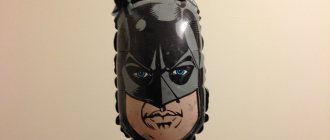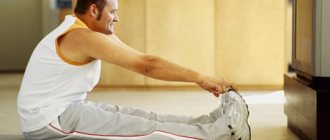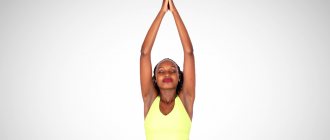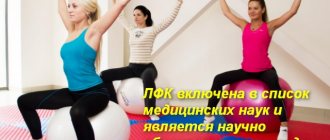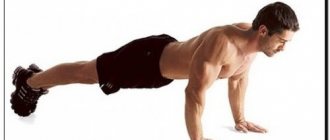Home » Training center » Exercises » A set of exercises on simulators
People go to gyms for many reasons. Some people want to “create” a beautiful figure for themselves, others dream of losing weight or are simply struggling with physical inactivity. Often, having purchased a subscription, beginners do not know how to organize their classes or where to start. There are special exercise algorithms for the gym. Moreover, the set of exercises in the gym for women differs from the male standard. Exercises for losing weight and strengthening muscles are also not the same.
Exercises in the gym without a trainer: recommendations for beginners
First of all, you must follow the following rules for training in the gym:
- Always start your workout with a warm-up. This will allow you to tone your muscles, warm them up and prepare them for the work ahead. Warm-up is performing simple cardio exercises. This could be running on a treadmill, jumping rope, lunges without weights, jumping, or riding an exercise bike. After warming up, muscles are more pliable and less susceptible to injury.
- Before the main workout, it is recommended to properly stretch your joints using leisurely rotational movements. Start with the neck, then move to the shoulders, elbows, hands, then knead the torso and spine by bending in different directions. And lastly, work the joints of the legs and lower back.
- You should exercise directly on the simulators with caution. You shouldn't start with heavy weights if you're a beginner. During the introductory training session, set the minimum weight values, and only then, when you have confidently mastered the technique, can you gradually increase the load.
- After completing the main workout, you need to return to the cardio equipment and also do some stretching exercises. This will significantly reduce or completely eliminate muscle pain the day after your workout.
By following these recommendations, you will significantly reduce the risk of injury and increase the effectiveness of each session.
Concept of self-control
Self-control - during physical education and sports - regular monitoring of the person involved in physical education and sports over the state of his health, physical development, as well as the effect of physical activity on the body. Self-monitoring data significantly complements the information obtained during a medical examination. In addition, self-control also has an educational value, teaching a conscious attitude towards classes, observing the rules of personal hygiene, proper daily routine, and hardening.
In the process of self-control, they rely on subjective indicators - well-being, mood, sleep, appetite, performance, etc., as well as the simplest objective ones - heart rate and rhythm and breathing, body weight, muscle strength, etc. Basic functional tests can also be used for self-control , For example
orthostatic and orthoclinostatic, breath-hold test.
The number of indicators for self-control is determined by the health status of the student, his level of physical fitness and the assigned tasks. For example, for elderly people it is mandatory to control blood pressure, which is measured at least once a week.
After physical exercise, you should feel cheerful, your mood, appetite, and performance should be good. The practitioner should not experience a feeling of weakness or severe fatigue. In the absence of good health (lethargy, drowsiness, irritability), the presence of muscle pain, reluctance to exercise, you should temporarily (for 1-2 days) stop exercising and resume them, gradually increasing the load, if you feel worse (throbbing headache, heaviness in the back of the head, flickering spots before the eyes, tinnitus, nausea, etc.) you should stop exercising and consult a doctor.
The purpose of self-control is regular observation in simple and accessible ways of physical development, the state of your body, the influence of physical exercise or a specific sport on it.
Self-control tasks:
- Expand knowledge about physical development.
- Acquire skills in assessing psychophysical fitness.
- Familiarize yourself with the simplest available self-control techniques.
- Determine the level of physical development, fitness and health in order to adjust the load when engaging in physical education and sports.
Self-monitoring allows you to promptly identify the adverse effects of physical exercise on the body.
Basic self-control techniques:
- Instrumental
- Visual
For self-control to be effective, it is necessary to have an idea of the body’s energy expenditure. In case of neuropsychic and muscular stress that arises when performing educational activities in combination with systematic load, it is important to know the time intervals for rest and restoration of mental and physical performance, as well as techniques, means and methods by which the functional capabilities of the body can be more effectively restored.
https://youtu.be/_kd0npF6lMg
Basic types of exercises on simulators and technique of execution, how to train correctly
So you came to the gym for the first time. Where to start training, which simulator to approach first? You should start by warming up on a cardio machine. Then you can work out different muscle groups. But it is recommended to first perform the basics - these are multi-joint exercises that involve several muscle groups at once, and then work on local muscle groups. It’s worth creating a program for yourself based on the general principles of training described above.
Let's look at the most popular exercises for training in the gym.
Cardio equipment
The treadmill is the most common piece of exercise equipment in any gym. On modern tracks it is possible to adjust the speed and angle of inclination.
Treadmill running technique:
- Get on the treadmill and choose the mode that suits you best.
- Adjust the tilt angle if necessary. If you are a beginner, it is better to start on a straight path.
- Use the pens exclusively to check your heart rate.
- The main indicator of training intensity will not be speed, but heart rate. Heart rate should be no less than 120 and no more than 160, although some calculate their maximum possible heart rate using the formula: 220 minus your age. In this case, the indicator of training effectiveness will be a heart rate of at least 70% of the maximum.
For example, you are 30 years old. Your maximum heart rate is 220-30=190. Training will be effective at a heart rate of 133.
You can do cardio training not only on the track. There is also an exercise bike, as well as various steppers and rowing machines. If the treadmill is aimed at strengthening the leg muscles, then the exercise bike and steppers also partially develop the abdominal muscles, and rowing machines imitate the movements of rowing, helping to strengthen the shoulder girdle and the entire muscle corset.
When exercising on any type of cardio equipment, you need to follow approximately the same recommendations for heart rate as on a treadmill, taking into account the specifics of each.
Rows on block machines
Block simulators are simulators that are based on blocks, by lifting which you purposefully pump up a particular muscle. The advantage of such simulators for beginners will be their relative safety and simple technique for performing the exercises. This is an alternative to free weight exercises for those who have not yet learned to feel their muscles.
for detailed study of individual muscle groups
Rows on block machines are basic exercises that work several muscle groups at once. Let's take a closer look at the main and most popular ones.
Vertical pull-down to the chest
The back muscles work, as well as the shoulders and arm muscles. An alternative to pull-ups if you don't know how to do them yet. When performing this exercise, you should follow the following technique, carefully monitoring the correct position of the body and arms:
- We set up the simulator, adjust the height of the rollers so that it is comfortable to sit and hold on with your feet.
- Sit down so that the bar is directly above your head, hold the bar with your hands, palms slightly wider than your shoulders.
- The back should be arched at the waist and tilted forward or backward. It is important to understand that the thrust should not be performed at an angle, but strictly vertically.
- We lower the handle to the upper chest, and the work of the shoulder blades should be felt.
- Then we raise the bar to its original position, slightly short of bringing the arms to full straightening.
- We repeat the exercise.
Horizontal row in a block machine
This exercise targets the muscles of the back, chest and shoulders.
- The starting position is sitting on the simulator, the back is arched in the lower back, the legs should remain slightly bent at the knees.
- We take the handle with outstretched arms, as we exhale, we move our shoulders back and try to bring our shoulder blades together, placing our elbows behind our backs as far as possible. At the same time, intense work of the back muscles should be felt. To use your back as much as possible, you can experiment with your grip and handles.
- As you inhale, slowly return the projectile to its place, stretching the just-used back muscles as much as possible.
Leg exercises
Leg training is an important element of both mass gain and weight loss programs.
Leg press
This is a basic exercise that involves lifting a special platform by bending and extending your legs. The platform can be positioned horizontally or at an angle of 45 degrees. This exercise allows you to work your buttocks and thighs. It is ideal for those who are contraindicated in classic weighted squats due to back problems. When performing leg presses, you should follow the following technique:
- Lie down on the machine and place your feet on the platform, placing them approximately shoulder-width apart.
- Remove the platform from the stoppers and straighten your legs.
- Bend your knees and lower the platform down.
- We straighten our knees, resting on our heels, and repeat again the required number of times.
basic exercise for working the legs and back
Lunges in Smith
Smith lunges are an increasingly popular exercise for pumping up the muscles of the front of the thighs, as well as the buttocks. Technique for performing classic Smith lunges:
- Set the desired weight.
- We stand under the machine, feet shoulder-width apart. Place the barbell on your back, just below your neck. Be sure to bend your back at the lower back, with one leg slightly in front.
- As you inhale, move your other leg back and do a squat. The body weight is concentrated on the heel of the working leg.
- We rise back and put the leg back in place, without straightening the knees completely, and at the same time exhale.
- Repeat the required number of approaches. Then we change legs.
correct position of the barbell
Squats at Smith
An effective exercise for working out the hips and buttocks. Technique:
- We set the desired weight, place the barbell on the back in the same way as in the previous exercise. The grip is slightly wider than shoulder-width apart, and your feet are also slightly wider than shoulder-width apart on the floor. Shoulder blades retracted, back straight.
- Slowly squat while inhaling, lowering the bar and bending your knees to a right angle. You can imagine that you are sitting on an invisible chair.
- We rise up to the starting position, straightening our legs, with the main weight falling on our heels. Repeat as many times as necessary.
Exercises for the abs
The abdominals are the collection of muscles that make up the abdominal wall. To lose weight in the abdominal area, you should not do abdominal exercises every day or every workout. You can do a couple of abdominal exercises on your easiest workout day. At the same time, watch your diet. To pump up noticeable sculpted muscles, you need to understand that fat will not turn into muscles, even pronounced relief may be unnoticeable if you do not dry it regularly.
Let's look at the most popular abdominal exercises in the gym.
Roman chair sit-ups
This exercise engages the rectus abdominis muscles. To lose weight, it is enough to use your body weight. If you want to pump up your abs, you can use weights. Technique:
- The starting position is lying on the simulator, the lower back is pressed against the bench, the legs are comfortably placed on the bolsters and fixed.
- As you exhale, slowly raise your body up, slightly rounding your back.
- As you inhale, lower your body down without lying on the bench, and then repeat the rise up again as you exhale.
Roman chair crunches
Crunches help keep your abdominal muscles toned. It is very important to consider that this exercise is performed slowly and calmly, without sudden movements to avoid possible back injuries. Technique:
- We sit on a bench, arms crossed on our chest, eyes looking straight.
- As you inhale, lower your body down, just below the horizontal position.
- As you exhale, raise your body up to an angle of about 45 degrees, and linger at this point for a short time.
- Lower the body to the starting position and repeat the exercise.
straight crunches on a Roman chair
Leg raises on parallel bars
This exercise allows you to effectively work out the lower abdominal muscles and remove a protruding tummy. The exercise has a good effect, and the technique is simple:
- We stand on the uneven bars with straight arms (if it’s hard on straight arms, you can use your elbows), tilt your chest slightly forward. The head and chest are on the same line.
- We raise our legs bent at the knees to the chest.
- Lower it to the starting position.
LIST OF REFERENCES USED
1. Eysenck G.Yu. Psychology: Benefits and harms. Sense and nonsense. Facts and fiction / G.Yu.Eysenck. - M.: Harvest, 2003. - 270 p.
2. Batalov A.G., Cheremisinov V.N. Physical performance and bioenergetics of muscular activity of athletes of various sports, a study of factors that determine the special performance of skiers specializing in sprint racing // In the collection: Current problems of biochemistry and bioenergetics of sports of the XXI CENTURY Proceedings of the All-Russian scientific and practical Internet conference. Under general ed. R.V. Tambovtseva, V.N. Cheremisinova, S.N. Litvinenko, I.A. Nikulina, O.S. Zhumaeva, E.V. Pletnevoy; RGUPEKSMIT (GTSOLIFK).
2016. pp. 45-52.
3. Bogdanov A.A. Construction of an annual macrocycle in the system of training qualified sprint skiers // In the collection: Improving the professional and physical training of cadets, students of educational organizations and employees of law enforcement agencies Materials of the XVII International Scientific and Practical Conference dedicated to the 70th anniversary of Victory in the Great Patriotic War of 1941-1945 . and the celebration of the 20th anniversary of the formation of the Department of Physical Training. 2020. pp. 317-320.
4. Velsky I.V. Effective training systems: Arm wrestling. Body-building. Benchpress. Powerlifting /I.V. Velsky. - Minsk: LLC Vida-N, 2002. - 352 p.
5. Volkov L.V. Theory and methodology of children's and youth sports /L. V. Volkov. - K.: Olympus, lit., 2002. - 294 p.
6. Vyatkin B.A. Temperament and abilities for sports activities / B.A. Vyatkin // Sports psychology in the works of domestic specialists (Compiled and generally edited by I.P. Volkov).
- St. Petersburg: Peter, 2002. - P. 15 - 23.
7. Gissen L.D. Psychology and mental hygiene in sports / L.D. Gissen. - M.: Soviet Sport, 2010. - 160 p.
8. Golovko D.E., Zagrevsky O.I. Features of physical training skiers sprinters // New word in science: development prospects. 2016. No. 2 (8).
pp. 70-71.
9. Guzeev, P. Powerlifting: Methodological manual / P. Guzeev, Yu. Pimenov. - M.: Terra-Sport, 2003. - 225 p.
10. Dvorkin L.S. Weightlifting: Textbook for universities /L. S. Dvorkin. -M: Sov. sport, 2005. - 597 p.
11. Evseev, Yu. I. Physical education: a textbook for university students / Yu. I. Evseev. - Rostov-on-Don: Phoenix, 2010. - 382 p.
12. Ilyin E.P. Psychology of sports / E.P. Ilyin. - St. Petersburg: Peter, 2009. - 352 p.
13. Kaminsky Yu.M. Individual characteristics in increasing the performance of sprint skiers in competitive activity // Bulletin of the Chelyabinsk State Pedagogical University. 2013. No. 6. P. 73-84.
14. Kiselev Yu.Ya. Study of individual psychological characteristics and psychomotor skills in athletes of various qualifications in various sports / Yu.Ya. Kiselev, A.A. Bakumenko, B.A. Varakin, S.S. Kryuchek, A. Maslennikov, G.G. Rumyantsev, I.K. Smirnova, V.P. Umansky // Selection and preparation of qualified athletes for important competitions. - L.: LNIIFK, 1975. — P.110 — 124.
15. Klimov E.A. Individual style of activity / E.A. Klimov. - Kazan: KSU, 1969. — 278 p.
16. Makarenko, A. S. Pedagogical works: in 8 volumes: T. 1 / A. S. Makarenko. – M.: Pedagogy, 1983. – 366 p.
17. Martens R. Who predicts anxiety better: coaches or athletes? / R. Martens, F. Rivkin, D. Burton // Sports psychology in the works of foreign specialists / Comp. and general ed. I.P. Volkova, N.S. Tsikunova. - M.: Soviet Sport, 2005. - P. 214-219.
18. Matveev L.P. Fundamentals of the general theory of sports and the system of training athletes/L. P. Matveev. - K.: Olympus, lit., 1999. - 318 p.
19. Pavlov I.P. Twenty years of experience in the objective study of higher nervous activity (behavior) of animals. - M.: Nauka, 1973. - 661 p.
20. Application of strictly regulated loads in the training process of highly qualified sprint skiers / Kolykhmatov V.I., Golovachev A.I., Shirokova S.V. // Scientific notes of the University named after. P.F. Lesgafta. 2020. No. 5 (135).
pp. 127-132.
21. Puni A.Ts. Psychological training in sports / A.Ts.Puni // Sports psychology in the works of domestic specialists / Ed. Volkova I.P. - St. Petersburg: Peter, 2002. - P. 61-74.
22. Rodionov A.V. The influence of psychological factors on sports performance / A.V. Rodionov // Sports psychology in the works of domestic specialists / Ed. Volkova I.P. - St. Petersburg: Peter, 2002. - P. 81-89.
23. Rumyantseva E.R. Sports training of weightlifters. Adaptation mechanisms / E.R. Rumyantseva, P.S. Gorulev. - M.: Theory and practice of physics. culture, 2005. - 260 p.
24. Rusalov V.M. Temperament in the structure of human individuality: Differential psychophysiological and psychological studies / V.M. Rusalov. - M.: Publishing house "IP RAS", 2012. - 528 p.
25. Rybalsky P.I. Structure and content of training microcycles of various directions depending on the characteristics of competitive exercises in the gym: Abstract of thesis. dis. for scientific, candidate's degree. ped. Sciences: spec. 13.00.04 “Theory and methodology of physical education and sports training” / P.I. Rybalsky. - M., 2000. - 22 p.
26. Sobchik L.N. Psychology of individuality: Theory and practice of psychodiagnostics / L.N. Sobchik. - M.Rech 2005. - 624 p.
27. “Improving training and education methods in powerlifting”: methodological recommendations / S.R. Gadzhigaeva - Tarko-Sale: 2020 - 24 p.
28. Rehabilitation means and the effectiveness of their use in cyclic sports / Avanesov V.U., Aralov V.I., Bugaev G.V., Shcheglov V.N. Textbook for educational institutions of higher professional education carrying out educational activities in the direction 49.03.01 - “Physical Education” / Voronezh, 2020.
29. Stambulova N.B. On the formation of sports-important mental properties of athletes / N.B. Stambulova // Sports psychology in the works of domestic specialists (compiled and generally edited by I.P. Volkov).
- St. Petersburg: Peter, 2002. - P.88 - 95.
30. Teplov B.M. On the issue of psychological manifestations of the basic properties of the nervous system / B.M. Teplov // Personality psychology in the works of domestic psychologists; ed. L.V.Kulikov. - St. Petersburg: Peter, 2009. - pp. 33-36.
31. Factors that determine the sports specialization of cross-country skiers / Bakaev V.V., Bolotin A.E., Vasilyeva V.S. // Theory and practice of physical culture. 2020. No. 2. P. 40-41.
32. Khanin Yu.L. Study of anxiety in sports / Yu.L. Khanin // Questions of psychology. - 1978. - No. 5. - P.94 - 106.
33. Shakhlina L.G. Medical and biological foundations of sports training for women / L.G. Shahlina. - K.: Nauk, Dumka, 2001. - 325 p.
34. Sheiko B.I. Powerlifting. Handbook for trainer / B.I. Sheiko. -M.: JSC EAM "Sport Service", 2003. - 532 p.
bibliography
Similar works
psychology of businessmen's activities
Special physical training for a water polo goalkeeper
criteria for selecting children into initial training groups for football lessons
Development of mobility in the hip joints in girls 5-6 years old involved in sports aerobics at the stage of initial training
Development of special physical qualities of initial training boxers
Development of special physical qualities of initial training boxers 2
system of sports competitions and competitive activities
Mass sports work and combat training in the system of ministries and departments of the Russian Federation.
Mass sports work and combat training in the system of ministries and departments of the Russian Federation
Exercises for the pectoral muscles
In pursuit of six-pack abs or toned buttocks, don’t forget about the chest muscles. But here it should be taken into account that the principles of female and male chest training should be different. Women should focus on the upper chest muscles and not overwork the lower ones. And for men, the load should be distributed evenly.
Let's look at a few popular chest exercises in the gym.
Butterfly
To perform this exercise, a “pack-deck” simulator is used, consisting of a bench with a back and two levers. The essence of the butterfly exercise is to bring the levers together. Let's look at the technique in more detail:
isolated workout of the upper chest muscles
- We sit down on the bench, press our backs and the back of our heads against the back, with our feet shoulder-width apart. We clasp the handles with our palms.
- As you exhale, pushing the levers, bring your arms together in front of you. We linger for a second in this position, tensing the pectoral muscles.
- As you inhale, slowly and smoothly return your arms to their original position.
- We repeat the exercises the required number of times.
Hammer press
Exercise to work the muscles of the lower chest.
Technique:
- We sit down in the simulator, pressing the body tightly against the back. The shoulder blades are brought together.
- As you exhale, gently push the exercise machine forward, tensing your pectoral muscles and focusing on your elbows.
- In the extreme position, we linger for a couple of seconds and, while inhaling, slowly return to the starting position.
- We do the required number of repetitions.
Hummer press, video
Exercises for the shoulder girdle and arms
Arm muscles should be effectively worked out by both men and women. After all, the structural features of the hormonal system will not allow a woman to pump up her arms without the use of additional means. However, it is worth considering the difference in weight and the number of approaches for losing weight or gaining muscle mass.
Scott Bench Curl
The exercise works well on the shoulders, back and biceps. Technique:
- We sit on the bench, place the triceps on the surface of the bench, elbows shoulder-width apart. In your hands is a barbell or dumbbell.
- As you inhale, slowly lower the projectile, straightening your elbows.
- As you exhale, raise the barbell, bending your elbows, to shoulder level.
- We repeat the exercise the required number of times.
Dumbbell Curls
Curling arms on a biceps machine
To pump your biceps in isolation, you can perform biceps curls on a biceps machine. The technique is simple, the exercise is safe even for beginners.
- We set the desired weight, sit on the bench, place our elbows on the supports and grab the handles. The elbows are in line with the shoulders.
- Using the strength of your forearms, as you exhale, raise the handles.
- Slowly lower the handles to the starting position while inhaling and repeat the exercise again.
Exercises with apparatus
Also, exercises with apparatus have become classics of training in the gym; dumbbells or a barbell are most often used today. Let's look at a few classic exercises with apparatus.
Barbell Bench Press
The bench press is an exercise aimed at working the muscles of the chest, back and arms. Considered basic. It is better to perform the bench press on a bench. Technique:
basic exercise for working the muscles of the shoulder girdle, back and arms
- We lie down on the bench on our back so that the bar is at eye level. The legs are spaced slightly wider than the shoulders, the feet are flat on the floor, the main weight is distributed on the heels, the lower back is slightly arched, the shoulder blades are retracted.
- We take the bar with an overhand grip.
- As you exhale, raise the bar above you so that it is just above the bottom of your chest.
- As you inhale, lower the bar to its original position.
Deadlift
An exercise to work the core muscles, as well as the shoulder blades and buttocks. When performing deadlifts, you must strictly follow all instructions, under no circumstances arching your back upward. Can be performed with both a barbell and dumbbells. Let's look at the barbell technique:
- The starting position is standing in front of the bar, the legs are slightly narrower than the shoulders, the back is straight, the pelvis is laid back, the head is looking straight.
- We tilt the body forward while simultaneously abducting the pelvis and bending the knees, arms down.
- Without deviating in the body, we squat a little to grab the bar.
- We take the bar with our palms facing us.
- As you exhale, smoothly straighten your legs, then straighten your back, holding the bar in your hands.
- As you inhale, lower the bar into place, avoiding rounding your back. We repeat again.
